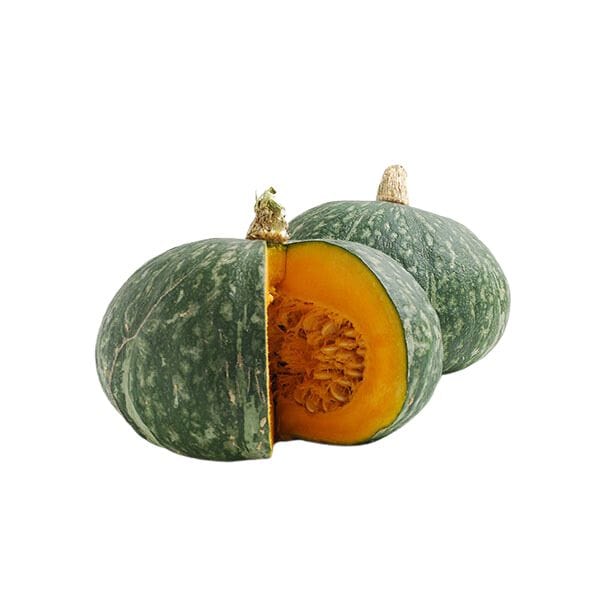Top 7 Foods That Start With K for Healthy Eating in 2025

Top 7 Foods That Start With K for Healthy Eating in 2025
In 2025, healthy eating continues to gain prominence as more individuals recognize the importance of nutrition in their daily lives. Among the many delicious foods available, those starting with the letter "K" offer a unique taste while packed with essential nutrients. In this article, we will explore seven standout foods beginning with "K" that you can incorporate into your meals for a healthier lifestyle. Each item not only adds flavor but also provides various health benefits, making them perfect for any diet. We will dive into the nutritional aspects, easy preparation methods, and delicious serving suggestions for these foods.
By implementing these "K" foods in your diet, you can also discover new and exciting culinary experiences. Let's explore these nutrient-rich options that are not just healthy but also fun to prepare and enjoy!
Kiwi: The Nutrient-Packed Fruit
Kiwi, also commonly referred to as kiwifruit, is a vibrant and delicious fruit known for its unique flavor and powerful health benefits. Packed with vitamins, particularly vitamin C, kiwi helps boost the immune system and contributes to skin health. Additionally, it contains antioxidants that protect cells from oxidative stress.
Health Benefits of Kiwi
One of the main advantages of consuming kiwi is its high fiber content, which aids digestion and promotes gut health. Moreover, kiwi is a low-calorie fruit, making it an excellent choice for anyone looking to manage their weight. Regular consumption can also help in regulating blood sugar levels.
How to Enjoy Kiwi
Kiwi can be enjoyed in various ways. Slice it up and toss it into your morning yogurt or oatmeal for an added nutrient boost. You can also blend kiwi into smoothies or create a refreshing fruit salad. Remember, the skin is edible and also has its own nutritional benefits — just make sure to wash it thoroughly!
Kiwi Recipes to Try
For a delicious twist, try making a kiwi avocado salad or a tangy kiwi salsa to top your grilled dishes. The vibrant green of the kiwi will enhance presentation and taste, leaving your taste buds delighted.
Kale: A Superfood Powerhouse
Building on the theme of 'K' foods, we have kale, often labeled as a superfood due to its extensive health benefits. This leafy green is rich in vitamins A, C, and K, as well as minerals like calcium and iron.
Health Benefits of Kale
Kale is known for its potential to help lower cholesterol levels and reduce the risk of heart disease. The high antioxidant levels in kale may also help combat inflammation and protect against chronic diseases.
Versatile Ways to Include Kale
Kale can be used in salads, smoothies, or even cooked dishes. A popular way to enjoy kale is by making crispy kale chips, which serve as a nutritious alternative to traditional snacks. Simply toss kale leaves with olive oil and your choice of seasonings, then bake until crispy.
Recipes Featuring Kale
Consider experimenting with kale salad recipes, such as kale Caesar or massaged kale salad with lemon dressing. Adding nuts and seeds can provide extra crunch and nutrients.
Ketchup: A Tasty Condiment
Ketchup often gets a bad rep due to its sugar content, however, when prepared at home, it can be a healthier option. Making ketchup from scratch allows you to control the ingredients and find blends that taste great and fit your dietary needs.
Why Homemade Ketchup is Better
By creating your own version, you can reduce added sugars and incorporate healthy spices. Additionally, homemade ketchup can provide the flavor without artificial preservatives.
Using Ketchup in Dishes
Use your homemade ketchup in various dishes, ranging from dipping sauces for vegetables, to a base for marinades. It pairs wonderfully with grilled vegetables, meats, and even fries made from sweet potatoes.
Spotlight on Tomato Benefits
Remember that tomatoes, the primary ingredient in ketchup, are also a health powerhouse. They are rich in lycopene, an antioxidant known for its heart health benefits.
Kabobs: A Fun and Flavorful Meal
Kabobs are a delightful way to enjoy lean meats, vegetables, and various marinades. Skewering food not only makes for an appealing meal, but it allows a quick cooking time while maximizing flavors.
Benefits of Choosing Kabobs
Opting for kabobs can be beneficial for portion control as well as encouraging the consumption of vegetables. You can mix and match various proteins and veggies, making them suitable for various dietary preferences.
Creating Delicious Kabobs
Experiment with different marinades and spice blends for diverse flavors. Popular choices include garlic, lemon, or BBQ sauces. You can create chicken kabobs, veggie kabobs, or even beef kabobs, catering to your personal tastes.
Serving Suggestions for Kabobs
Serve kabobs alongside a fresh salad or a tasty grain dish such as couscous. They are perfect for barbecues, gathering, and family meals, allowing you to have fun while enjoying healthy foods.
Kohlrabi: A Versatile Vegetable
Next on our list is kohlrabi, known for its unique texture and versatility in cooking. This cruciferous vegetable is low in calories and rich in vitamins C and B6, as well as potassium and fiber.
Why Include Kohlrabi in Your Diet
Kohlrabi can enhance your immune system while also aiding in digestion due to its high fiber content. It is a wonderful source of antioxidants, helping reduce oxidative stress in the body.
Cooking Options for Kohlrabi
This root vegetable can be eaten raw, roasted, sautéed, or even blended into soups. Slicing it thinly creates a wonderful crunchy addition to salads. You can also make a kohlrabi slaw for a refreshing side dish during summer months.
Creative Kohlrabi Recipes
Try kohlrabi fritters or add it to stir-fries for a nutritious twist. Its sweet flavor holds up well against spices, making it a worthy addition to any dish.
Kimchi: A Fermented Delight
Rounding out our list, kimchi is a staple in Korean food, packed with flavor and probiotic benefits. Rich in vitamins, kimchi contributes to gut health and aids in digestion.
The Health Benefits of Eating Kimchi
Consuming fermented foods like kimchi supports a healthy gut microbiome. The fermentation process increases beneficial bacteria, which can positively impact overall health.
How to Incorporate Kimchi into Meals
Kimchi can complement a variety of dishes, from rice bowls to tacos. Adding kimchi to soups or stir-fries can elevate the dish, imparting a spicy and tangy flavor.
Making Your Own Kimchi
For culinary enthusiasts, making homemade kimchi allows you to control the spice levels and try various types of vegetables. Visit various recipes to find what suits your taste preferences.
Conclusion
Incorporating these top "K" foods into your diet can enhance your nutritional intake while keeping meals exciting and flavorful. From the vibrant taste of kiwi to the versatile uses of kohlrabi, these foods demonstrate how healthy eating can be delicious and enjoyable. With a little creativity in the kitchen, you can find numerous ways to enjoy these foods, helping you maintain a wholesome diet in 2025 and beyond.

